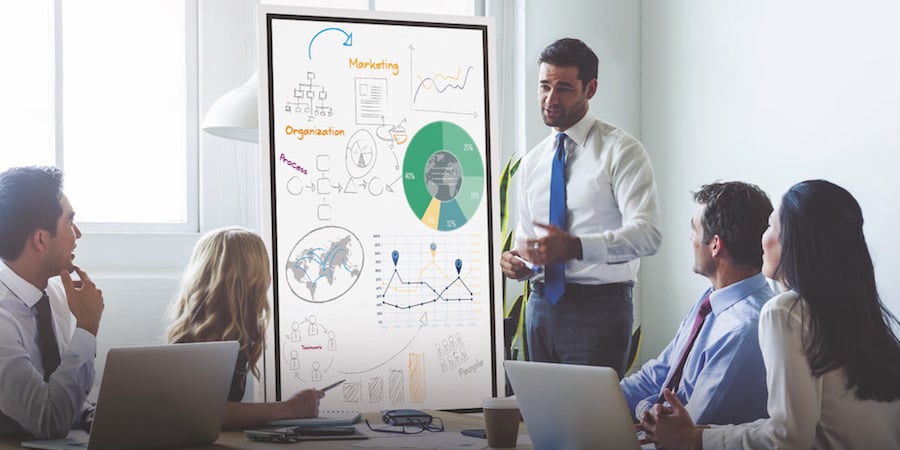Facilitation skills help organize collaborative work, cooperate procedures among various employees in a company, and consider all proposed ideas and viewpoints. They also help unify work teams' efforts, resolve conflicts, guide the decision-making process, and improve meeting outcomes. Moreover, Facilitation skills are a valuable tool for managers, team leaders, and employees to improve workplace relationships and foster a supportive and positive work environment.
What Is Facilitation?
Facilitation skills ensure successful individual communication and interaction processes. They entail organizing collective work and activities rather than taking responsibility or enforcing authority. The facilitator's mission includes organizing group activities, ensuring everyone shares ideas, facilitating a productive conversation, and enhancing the experience's interaction and enjoyment.
Facilitation skills are crucial in promoting team members' ideas and viewpoints and setting up the right environment for everyone to listen and understand one another. These circumstances facilitate better decision-making, problem-solving techniques, and team members' accountability and responsibility.
Facilitation skills enhance creativity and innovation and build trust so team members feel more appreciated and enthusiastic, encouraging them to share their ideas and invest their skills in work.

Facilitation Techniques
Here are five essential techniques for facilitating collaborative work among team members:
1. Active Listening
The facilitator's role requires ensuring that team members listen to each other, clarifying the speaking time available for each person, and showing empathy and interest. These actions help build rapport and ensure that each participant's input and ideas are valued.
Applying active listening within discussions among team members involves engaging in conversation, focusing on eye contact, and using body language cues that indicate follow-up and agreement, such as nodding and asking questions aimed at delving deeper into the topics being discussed.
2. Providing a Safe Environment
Team members should be encouraged to share ideas and suggestions freely by creating a safe and comfortable discussion environment. The first step requires clarifying basic rules such as respecting others' opinions and accepting all ideas and proposals to enhance safety, encourage open communication, and express opinions freely without fear of criticism.
3. Asking Purposeful Questions
The facilitator should ask creative-thinking-encouraging inquiries, not settling for ordinary questions. For example, you might ask team members: "What if we approached the problem from a different angle?" or "What assumptions have we not yet verified?"
These questions help change the usual thinking mechanism, as they push individuals to address the issue from an entirely different perspective, identify assumptions and biases, change limiting beliefs, and generate new ideas and viewpoints.
4. Time Management and Work Schedule
The facilitator's role requires ensuring that meetings achieve their desired goals and minimize time wastage as much as possible. This is done by preparing a meeting plan, being mindful of time, and ensuring that everyone follows the agenda and its primary points. Additionally, the facilitator must redirect discussions back to the main topic when they stray from it, meaning they are responsible for organizing meetings and ensuring they proceed according to the established plan and timeline to maximize the benefits from the time and effort of meeting participants.
5. Visual Facilitation
Visual elements include diagrams, charts, and mind maps, which encourage active participation and enhance mutual understanding among attendees. These visual elements aim to ensure that all parties are engaged in the meeting and assist them in comprehending complex ideas.
The facilitator benefits from visual elements to organize the presented ideas, create a discussion framework, and transform concepts shared by attendees into graphical representations displayed on a screen or drawn on a whiteboard in the meeting room. These visual aids help clarify and organize ideas, increase interaction during discussions, and enhance participants' ability to understand and contribute.

Practical Examples of Facilitation Skills in a Team Framework
Here are three practical examples of effective facilitation:
1. Conflict Resolution
Team members may disagree because of different project approaches and viewpoints. In this situation, facilitation techniques become essential to settling these conflicts and reaching solutions that satisfy all participating parties.
Communication skills based on active listening and respectful dialogue help address emotions, issues, and needs, allowing team members to find solutions that satisfy all parties involved and settle conflicts.
2. Decision-making
The facilitator intervenes when the team has difficulty making decisions about a complex issue. Their role involves organizing decision-making procedures and ensuring that all relevant information about the topic is presented to team members. This includes collecting data, viewpoints, and observations and assessing the issue comprehensively.
Team members then compare the proposed options' pros and cons, which may involve an analytical review of each option's potential outcomes, risks, and associated benefits.
Team members' ability to handle complex issues is improved when they work together, have thoughtful discussions, and cooperate to reach an agreement that satisfies all parties. They gradually narrow options until they arrive at a final decision considering all presented viewpoints.
3. Innovation and Creativity
Companies worldwide strive to establish a culture of creativity and innovation, strengthen team relationships, and improve teamwork. In this situation, effective facilitation techniques are evident. The facilitator's role requires applying a set of innovative techniques to help team members organize their diverse and creative ideas during brainstorming sessions.
The facilitator helps team members visualize the issue and understand its dimensions by converting abstract ideas into practical concepts using visual elements, diagrams, charts, and mind maps. This facilitates organizing the presented ideas for effective utilization. Additionally, the facilitator must provide an environment that welcomes new ideas and suggestions, encouraging team members to collaborate and contribute to improving and developing proposed ideas. This helps them have more in-depth conversations, be more innovative and creative, build stronger bonds within the team, and be better able to collaborate to accomplish common goals.
In Conclusion
Facilitation skills help organize collaborative work processes among team members, contributing to improving the quality of meeting outcomes and discussions. Part I of this article discussed the definition of facilitation skills, their benefits, and techniques and offered practical examples of their applications. Part II will explore the challenges of applying these skills and how to overcome them.











